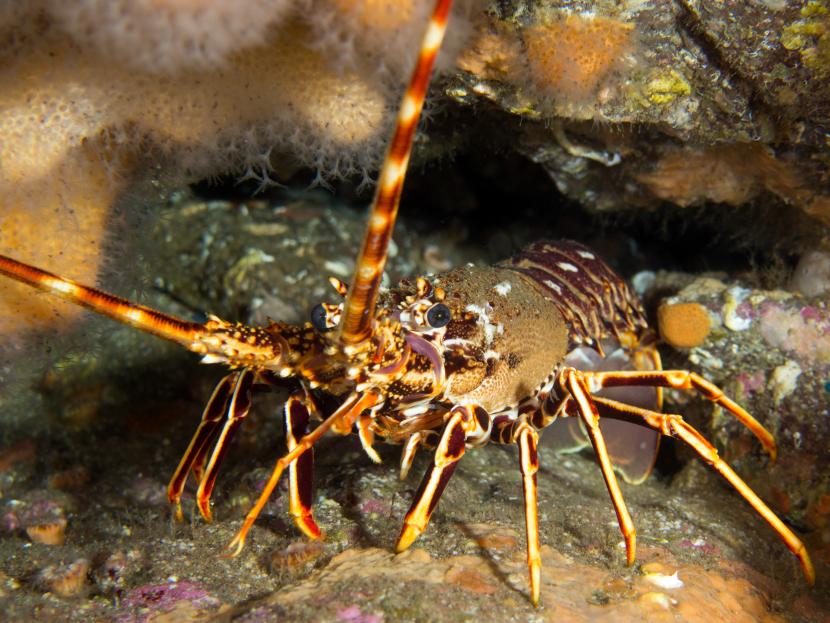
European spiny lobster
European spiny lobster fisheries are locally important, but populations of the crustacean have declined considerably since the 1970s.
The magnificent European spiny lobster (Palinurus elephas) – also known as crayfish or crawfish – is one of the most impressive seabed animals in Scottish waters.
Bright yellow-orange in colour, often with purple tinges, this large crustacean can grow up to 60cm in length. Measuring its strong antennae would make it bigger still. The lobster uses its small front claws to scavenge food from the seabed. Its big eyes allow it to be more active by night.

A European spiny lobster, Palinurus elephas on a rocky ledge with Dead man's fingers Alcyonium digitatum and Devonshire cup corals Caryophyllia smithii off Hoy, Orkney.
European spiny lobsters live mainly off the western coasts of Britain and Ireland and north towards Shetland. They are occasionally found off Scotland’s north-east coast. The lobster also lives in warmer waters south of Britain, around the Canary Isles and in the Mediterranean.
The European spiny lobster is currently at its northerly limits around Britain. So it’s likely that climate change will affect its distribution in our waters.
This species is generally found in open coastal areas and offshore seabeds. Inshore, they prefer rocky or mixed seabeds, often living in groups in rock crevices or boulder holes for protection. They usually live deeper than 15m, and move offshore during their periodic migrations to deeper water.
European spiny lobsters have few predators besides humans. As a defence, a lobster can either:
- rapidly jack-knife away from a threat using its powerful tail muscles
- use its strong spines to jam itself into a crevice, making it difficult to extract
Reproduction
European spiny lobsters make loud rasping sounds underwater by rubbing the bases of their antennae. To attract males to mate with, a female makes a particular ‘stridulating’ sound.
A European spiny lobster is mature when its carapace is about 10cm long. Lobsters mate in summer, and the females carry the fertilised eggs externally for up to nine months, often moving into deeper water to overwinter while the embryos mature.
Upon hatching, the larvae drift and feed on plankton before settling on the seabed as miniature adults. They are very vulnerable at this stage, and require a suitable seabed until they’re large enough to fend for themselves.
Threats to the European spiny lobster
There is a lack of information about the status of European spiny lobster populations in Scotland, but evidence suggests a decline in the population since the 1970s. A better understanding of both the current fishery and the size of the spiny lobster population is needed to achieve a sustainable fishery.
While the fishery could have affected the population of European spiny lobsters, environmental conditions may also play an important role, especially in the survival of larvae
The presence of European spiny lobster only on Atlantic coasts suggests that they prefer oceanic water, and they may respond to changes in water quality.
The European spiny lobster is a UK Biodiversity Action Plan priority marine species.






